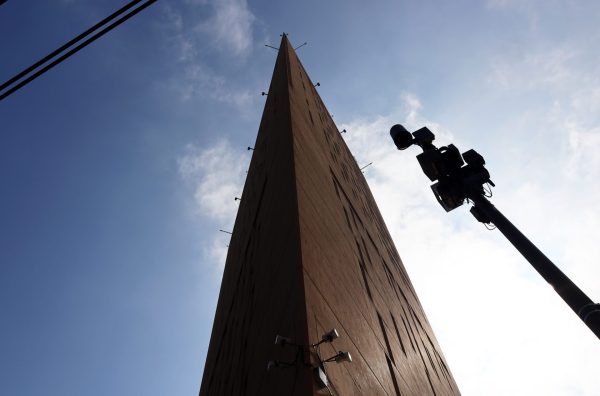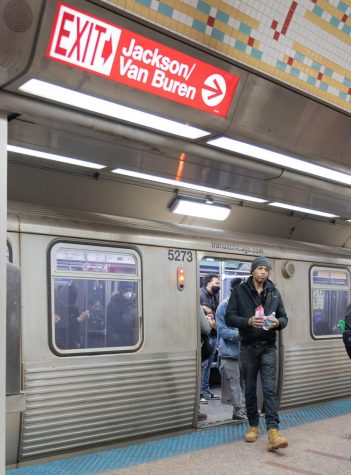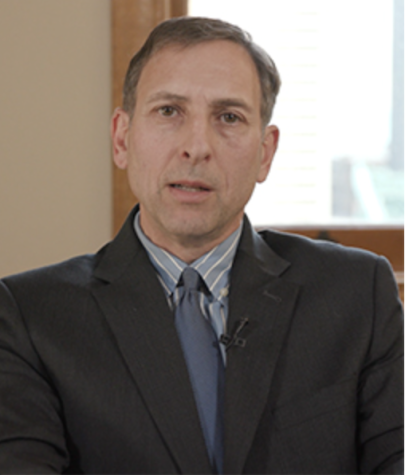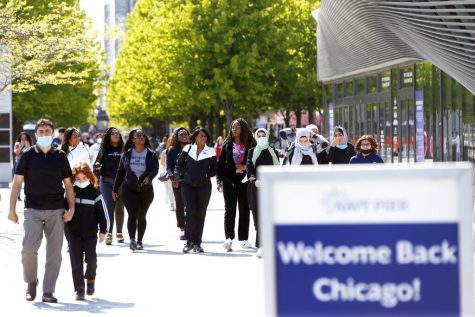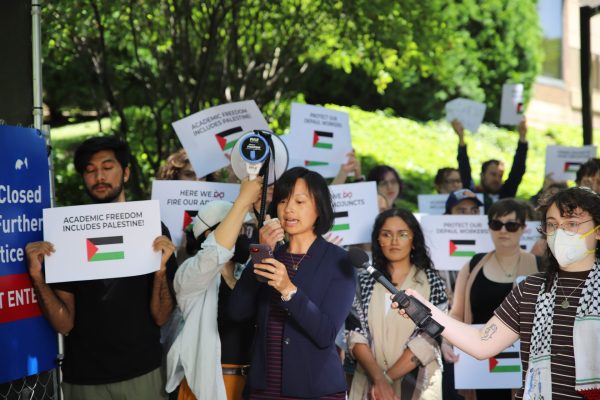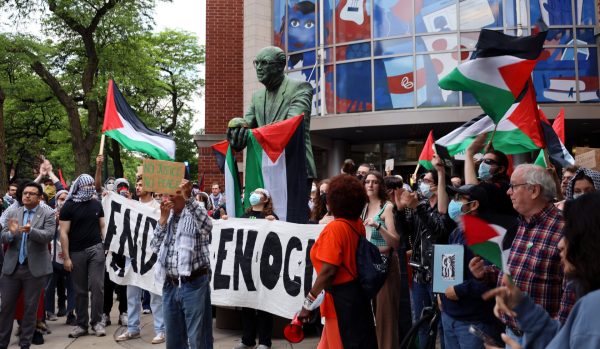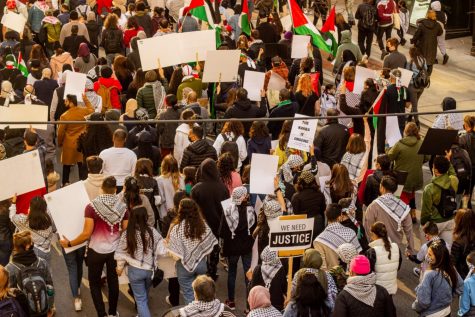Little Village alleges environmental racism after coal plant demolition
Tyler Laiviere/Chicago Sun-Times via AP
In this April 11, 2020 photo, a photographer with a bicycle walks though the dust cloud descending though the Little Village neighborhood, after the Crawford Generating Station smoke stack was imploded in Chicago. Fifty years after the first Earth Day helped spur activism over air and water pollution and disappearing plants and animals, significant improvements are undeniable but monumental challenges remain. Minority communities suffer disproportionately from ongoing contamination. Deforestation, habitat loss and overfishing have wreaked havoc on global biodiversity. And the existential threat of climate change looms large.
Little Village residents are reportedly experiencing environmental racism following the demolition of a local coal plant.
Edith Tovar, a lifelong Little Village resident and community organizer at the Little Village Environmental Justice Organization, said race is playing a significant role in the injustice communities of color are experiencing after the Crawford Coal Plant demolition on April 11.
“Race does play a role on why these injustices happen in communities of color,” Tovar said. “Little Village is a prodemitenly Mexican, Mexican-Americans with mixed immigration status community, [we have] limited green/recreational spaces, our community boundaries encompasses 44 percent of industry and multi-unit residential buildings.”
LVEJO is working with other environmental justice organizations to prevent polluters from getting away with risking public health and created a petition with a list of demands they are seeking regarding the demolition.
The petition has received over 15,000 signatures on Change.org since being launched on April 12.
“Many residents and allies are upset at the fact that officials approved permits for Hilco’s contractors to implode the smokestack during a pandemic,” Tovar said. “Our community already has high levels of diesel trucks emissions. The ongoing ‘business as usual’ during this pandemic is really exposing residents to unhealthy air quality.”
The Crawford Power Station, located at 35th and Pulaski, was built in 1926 by the Commonwealth Edison Company. Once seen as an engineering wonder, it has become a health risk for local residents.
“The Crawford Coal Plant is [about] a century old. High levels of lead, asbestos, coal ash. All these are very dangerous if exposed for a long period of time,” Tovar said.
Long-term exposure to toxicants like lead can eventually cause health issues like cancer, nerve disorders, and fertility problems.
Mark Potosnack, an environmental science and studies professor at DePaul University, said that although the direct impact of burning coal ceased when the power plant was shut down in 2012, there’s a possibility that toxic residues from combustion were released during the demolition.
“When the coal plant, and especially its stack, was demolished, a plume of dust traveled to the surrounding area,” Potosnack said. “Dust itself can be harmful, and there is also the concern that residues from the previous coal combustion were also released into the neighborhood.”
The Little Village neighborhood consistently ranks highest in air pollution levels across Chicago.
Ana Solano, who has been a Little Village resident for 20 years, said her community was affected in different ways by the smoke released by the demolition.
“The aftermath of the demolition was sickening,” Solano said. “The smoke looked scary, it looked like a huge cloud. A huge cloud that covered lots of blocks and it was very difficult to breathe, even hours after the demolition.”
The office of 22nd Ward Alderman Michael D. Rodriguez said Rodriguez took immediate action after witnessing the dust cloud and began talking to concerned neighbors.
“The alderman has hand-delivered and helped facilitate distribution of face masks and the acquisition of more,” the alderman’s office said. “He advocated, with the support of the City Council Latino and Progressive caucuses, for an investigation by the inspector general of the permitting process that allowed this debacle to proceed.”
Solano said that although some residents were notified April 9 of the demolition, the majority of them were unaware.
“I feel that the demolition during a pandemic was beyond irresponsible,” Solano said. I feel disregarded by our elected officials. I am angry. I am disappointed.”
Solano feels that Chicago’s segregated neighborhoods played a role in the demolition.
“I would really like to point out how politics play into what happened,” Solano said. “There is no way this would have been allowed in a more affluent neighborhood. Chicago has a deep history of segregation and it is sad that environmental issues have this layer of structural racism attached to it.”
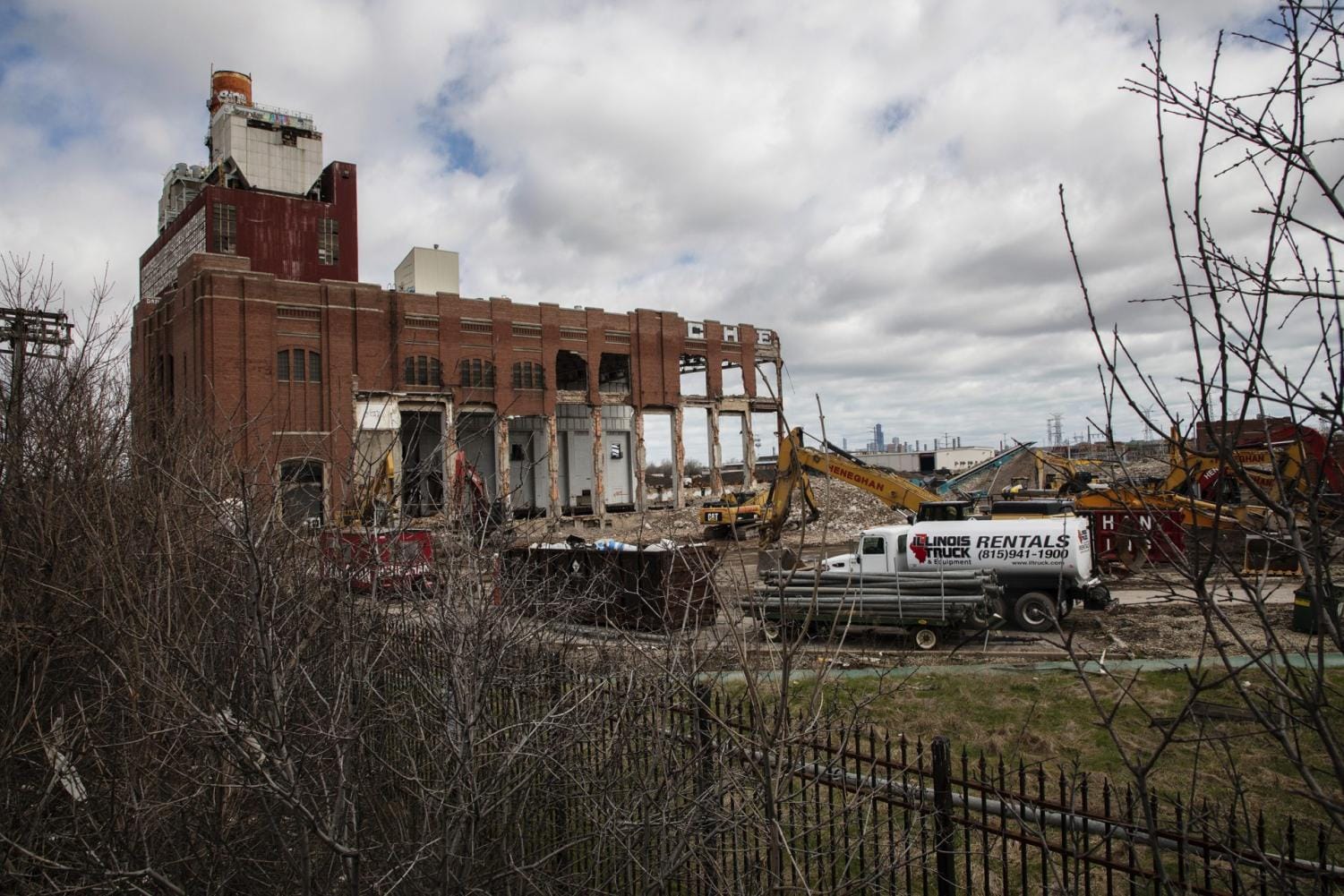
Although Chicago has a diverse population in its 77 neighborhoods, most of the city is segregated along racial lines. The South Side neighborhood of Chatham is 97 percent African American, while the North Side neighborhood of Edison Park is 84 percent white. 54 percent of West Side neighborhood Humboldt Park’s population are Latino.
The office of Rodriguez said injustice acts are occurring in neighborhoods of color and not in predominantly white neighborhoods because historically their communities have been marginalized.
“The plan to put a warehouse and truck terminal in Little Village is environmental racism – the promise of jobs versus being forced to live with dangerous levels of pollution is at the core of environmental racism,” the office said. “Cleaning up the coal plant site is necessary. The smokestack had to come down eventually. It would become a hazard as it deteriorated over time. The fact that community input was not considered is yet another instance of environmental racism.”
“Putting a coal-fired electric generation plant in the middle of an urban area and leaving it open for as long as it was was environmental racism. This history of racism has not yet been overcome.”



